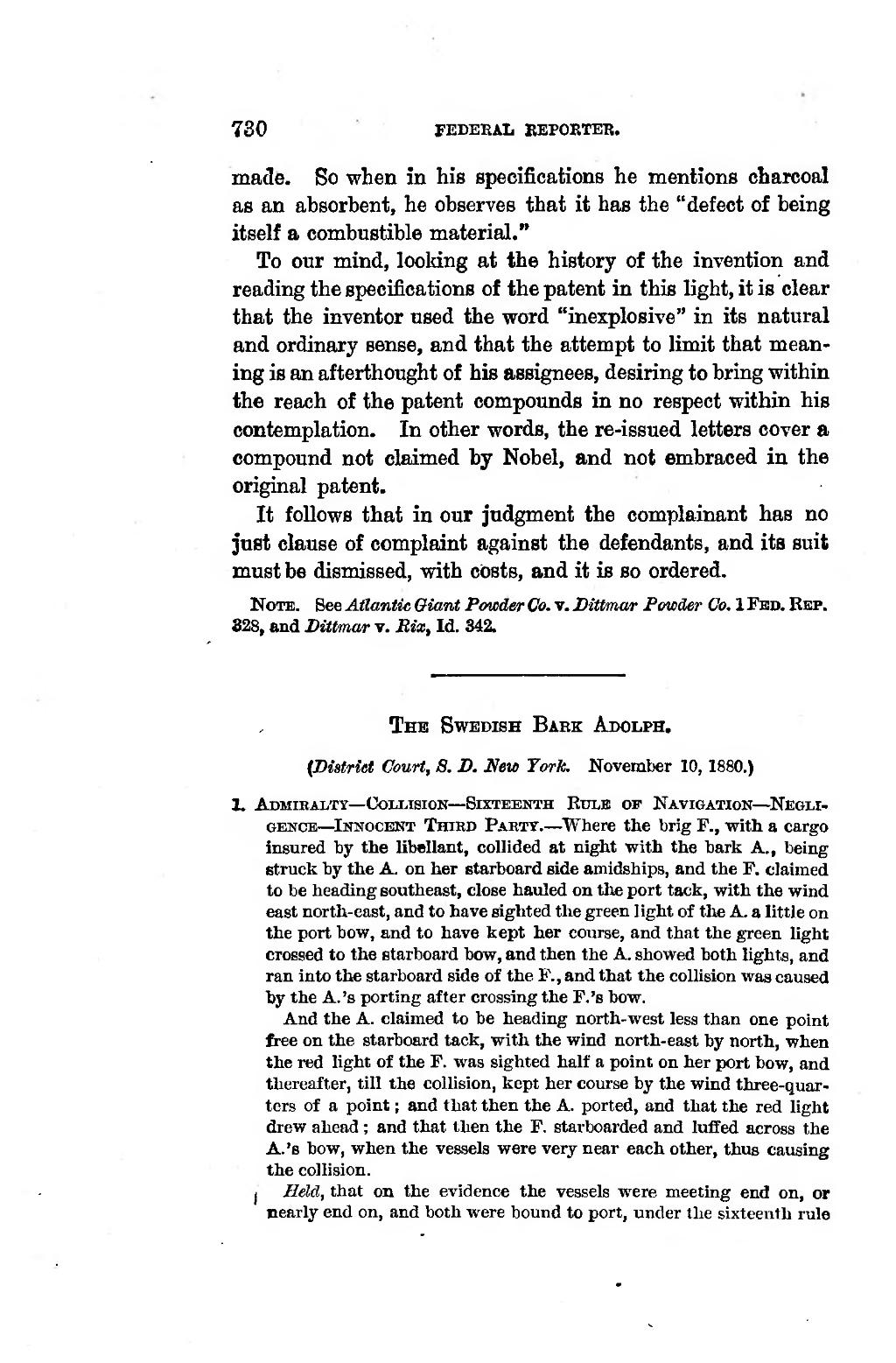730 FEDEEAL EEPOETEB. �made. So when in his specifications he mentions charcoal as an absorbent, he observes that it bas the "defect of being itself a combustible material." �To our mind, looking at the history of the invention and reading the specifications of the patent in this light, it is clear that the inventor used the word "inexplosive" in its natural and ordinary sense, and that the attempt to limit that mean- ing is an afterthought of his assignees, desiring to bring within the reach of the patent compounds in no respect within his contemplation. In other words, the re-issued letters cover a compound not claimed by Nobel, and not embraced in the original patent. �It foUows that in our judgment the complainant bas no just clause of complaint against the defendants, and its suit must be dismissed, with côsts, and it is so ordered. �Note. See Atlantic Qiant Powder Go. v. Dittmar Powder Go. 1 Fbd. Rep. 328, and Dittmar v. Bix, Id. 342. ���The Swedish Baek Adolph. {Bistritt Court, 8. D. New York. November 10, 1880.) �Admiralty — Collision — Sixteenth Rulb of Navigation — Negli- gence — Innocent Thibd Paktt. — Where the brig F., with a cargo insured by the libellant, collided at night with the bark A., being struok by the A. on her starboard side amidships, and the P. claimed to be heading southeast, close hauled on the port tack, with the wind east north-east, and to have sighted the green light of the A. a little on the port bow, and to have kept her course, and that the green light crossed to the starboard bow, and then the A. showed both lights, and ran into the starboard side of the F., and that the collision was caused by the A. 's porting after crossing the P. 's bow. �And the A. claimed to be heading north-west lesa than one point free on the starboard tack, with the wind north-east by north, when the red light of the P. was sighted half a point on her port bow, and thereafter, till the collision, kept her course by the wind three-quar- ters of a point ; and that then the A. ported, and that the red light drew ahead ; and that then the F. starboarded and luffed across the A. 's bow, when the vessels were very near each other, thus causing the collision. �I Held, that on the evidence the vessels were meeting end on, or nearly end on, and both were bound to port, under the sixteenth rule ����
